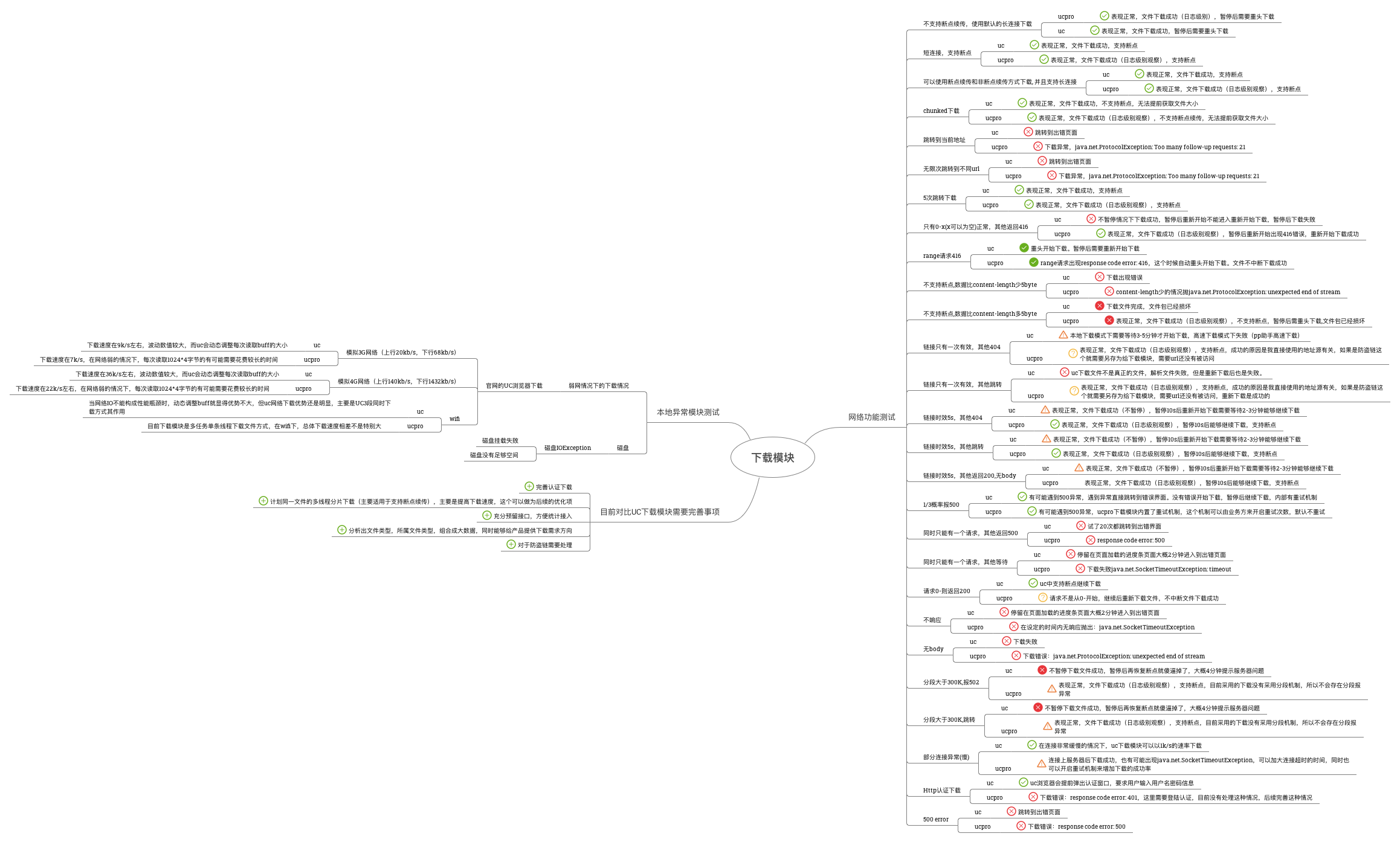春节过后,渐渐进入了工作的状态。在这些天中,主动提出要优化公司产品的下载模块多线程,目前产品是多任务单线程下载模式,这样一旦网络不行的情况下,下载会变的异常或者缓慢。加入文件的多线程下载是每个下载模块的标配了,之前也没有接触这块,所以也算是给自己一个挑战吧。
对下载模块的Api使用
- 一个模块简单易用是最基本的要求
- 配置简单
分析梳理现有的模块和思路
大致的任务启动分析路径

文件IO
对于文件IO这块,我们使用了Okio做为文件IO的底层工具,使用RandomAccessFile来实现文件的seek,从而实现文件的断点操作。为了最大化的加快文件的写入操作,我们加入了文件的预创建过程。

IO性能测试
这里的测试数据是将内存中的10MB的数据写入到磁盘的平均时间
| FileOutputStream |
BufferedOutputStream |
RandomAccessFile |
BufferedSink |
| 2983 |
2461 |
2369 |
2369 |
| 2493 |
5073 |
2430 |
2393 |
| 2780 |
2460 |
2421 |
2389 |
| 2492 |
2966 |
2427 |
2361 |
| 2870 |
2501 |
2570 |
2365 |
| 2490 |
3011 |
2430 |
2372 |
| 2963 |
2559 |
2400 |
2361 |
| 2493 |
2446 |
2438 |
2346 |
| 2615 |
4811 |
2400 |
2367 |
| 2518 |
3010 |
2398 |
2344 |
平均值:
| 2669.7 |
3129.8 |
2428.3 |
2366.7 |
这里的测试环境是有一个文件输入流,一个文件的输出流,然后每次读取相同的BUFFER_SIZE = 1024 * 8 来测试IO性能
| FileOutputStream |
BufferedOutputStream |
RandomAccessFile |
BufferedSink |
| 2144 |
2162 |
2265 |
2313 |
| 2447 |
3991 |
2205 |
2313 |
| 2211 |
2241 |
2196 |
2309 |
| 2474 |
2276 |
2191 |
2293 |
| 2230 |
2446 |
2184 |
2338 |
| 3305 |
2305 |
2201 |
2329 |
| 4772 |
2191 |
2827 |
2271 |
| 2418 |
2304 |
2795 |
2294 |
| 2319 |
2204 |
2166 |
2279 |
| 2316 |
2261 |
2797 |
2244 |
平均值:
| 2663.6 |
2438.1 |
2382.7 |
2298.3 |
可以从上面的数据看出,使用Okio文件写入非常稳定。
预创建文件
1
2
3
4
5
6
7
8
9
10
11
12
13
14
15
16
17
18
19
20
21
22
23
24
25
26
27
28
29
30
31
32
33
34
35
36
37
38
39
40
41
42
43
44
45
46
47
48
49
50
51
52
53
54
55
56
57
58
59
60
61
62
63
64
65
|
public static long KBSIZE = 1024;
public static long MBSIZE1 = 1024 * 1024;
public static long MBSIZE10 = 1024L * 1024 * 10;
public static boolean createFile(File file, long fileLength, final ValueCallback valueCallback) {
FileOutputStream fos = null;
try {
if (!file.exists()) {
boolean ret = file.createNewFile();
if (!ret) return false;
}
long batchSize = 0;
batchSize = fileLength;
if (fileLength > KBSIZE) {
batchSize = KBSIZE;
}
if (fileLength > MBSIZE1) {
batchSize = MBSIZE1;
}
if (fileLength > MBSIZE10) {
batchSize = MBSIZE10;
}
long count = fileLength / batchSize;
long last = fileLength % batchSize;
fos = new FileOutputStream(file);
FileChannel fileChannel = fos.getChannel();
for (long i = 0; i < count; i++) {
ByteBuffer buffer = ByteBuffer.allocate((int) batchSize);
fileChannel.write(buffer);
if (i % 3 == 0 && valueCallback != null) {
float x = i;
float y = count;
int progress = (int) ((x / y) * 100);
valueCallback.onReceiveValue(progress);
}
}
ByteBuffer buffer = ByteBuffer.allocate((int) last);
fileChannel.write(buffer);
if (valueCallback != null) {
valueCallback.onReceiveValue(100);
}
return true;
} catch (IOException e) {
e.printStackTrace();
} finally {
try {
if (fos != null) {
fos.close();
}
} catch (IOException e) {
e.printStackTrace();
}
}
return false;
}
|
测试用例图

开始一个任务,上层任务保留了文件的基本特性,使用方式:
1
2
3
4
5
6
7
8
9
10
11
12
13
14
15
16
| private void startTask(String url, String contentDisposition, String mimetype) {
String mT = MimeUtils.guessMimeTypeFromExtension(MimeUtils.getFileExtensionFromFileName(MimeUtils.guessFileName(url, contentDisposition, mimetype)));
ProDownloadRequest request = new ProDownloadRequest.Builder()
.url(url)
.title(MimeUtils.guessFileName(url, contentDisposition, mimetype))
.refUrl(url)
.mimeType(StringUtils.isEmpty(mT) ? mimetype : mT)
.build();
ProDownloadManager.getInstance().createTask(request).addOnStateChangeListener(new OnStateChangeListener() {
@Override
public void onStateChange(ProDownloadTask task, int status, long sofar, long total) {
}
}).start();
}
|


